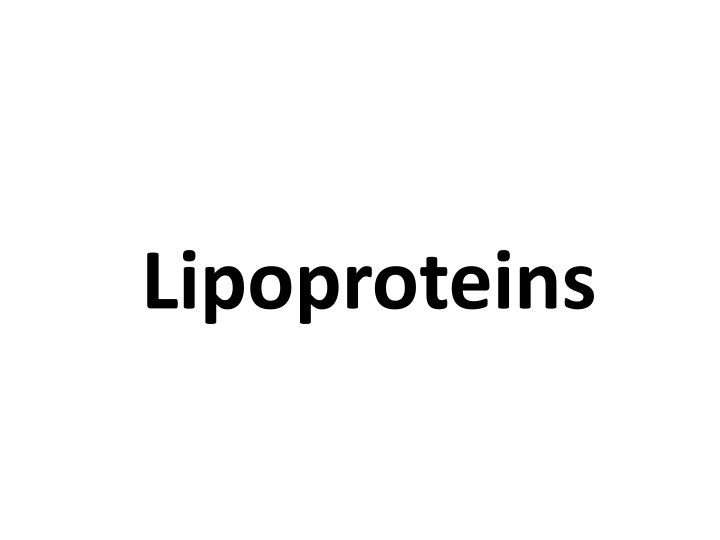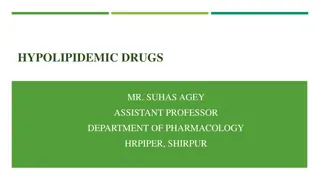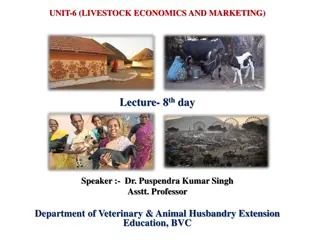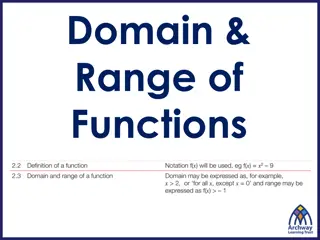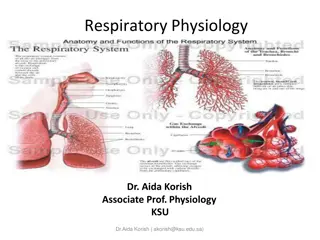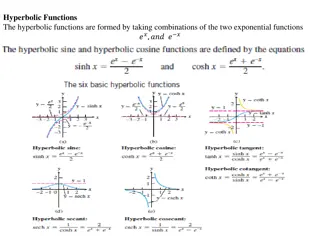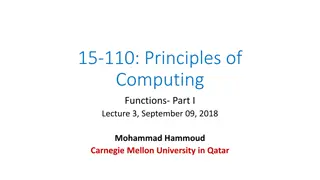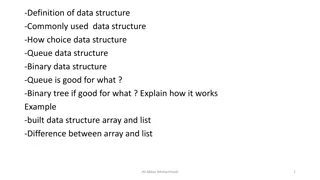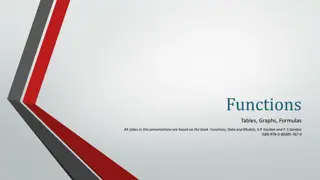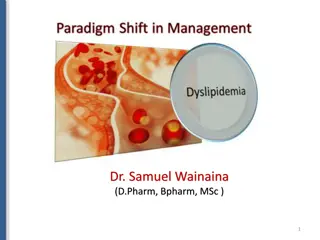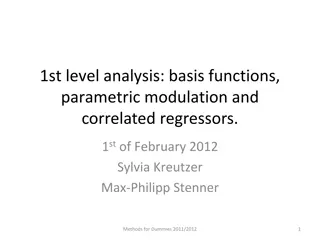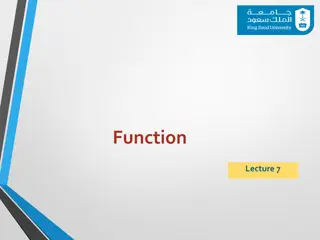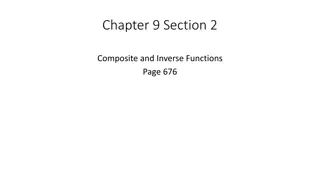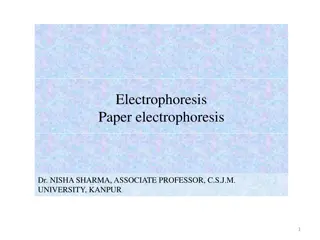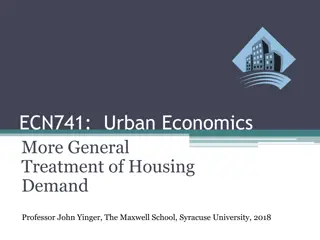Lipoproteins: Structures and Functions
Lipoproteins are compound lipids formed by the aggregation of neutral and amphipathic lipids with proteins (apoproteins). They serve as vehicles for transporting lipids through the bloodstream and lymphatic system, acquiring polarity due to their hydrophilic properties. These macromolecules are synthesized within tissues by combining various forms of lipids and apoproteins. The structure of lipoproteins includes a core composed of non-polar lipids like TAG and cholesterol ester, surrounded by apoproteins and amphipathic lipids like phospholipids at the periphery. The apoproteins and polar groups of amphipathic lipids provide hydrophilic properties, aiding in lipid transportation. Cholesterol is transported as part of a lipoprotein complex known as LDL.
Download Presentation

Please find below an Image/Link to download the presentation.
The content on the website is provided AS IS for your information and personal use only. It may not be sold, licensed, or shared on other websites without obtaining consent from the author.If you encounter any issues during the download, it is possible that the publisher has removed the file from their server.
You are allowed to download the files provided on this website for personal or commercial use, subject to the condition that they are used lawfully. All files are the property of their respective owners.
The content on the website is provided AS IS for your information and personal use only. It may not be sold, licensed, or shared on other websites without obtaining consent from the author.
E N D
Presentation Transcript
Lipoproteins Lipoproteins are types of Compound Lipids /Conjugated Proteins.
Lipoproteins are macromolecules formed by aggregation of : Lipids (Neutral and Amphipathic ) Proteins( Apoprotein) in the human body.
Lipoproteins acquire polarity (Hydrophilic Property)
Lipoprotein serve as vehicles for transportation of Neutral and Amphipathic Lipids through aqueous media blood and lymph.
Lipoproteins are biosynthesized within the cells of tissues. By aggregation of various forms of Lipids and Apoproteins.
Structure of Lipoproteins The non polar /hydrophobic Lipids TAG and Cholesterol Ester are gathered centrally to form the core of LipoProtein particle. At the periphery of Lipoprotein are Apoprotein and Amphipathic Lipids viz Phospholipids and Cholesterol.
The Apoprotein and polar groups of Amphipathic Lipids impart hydrophilic property to Lipoprotein molecules This helps in transportation of Lipids From site of origin to site of utilization through blood.
Cholesterol Transported as Lipoprotein Complex (LDL)
Functions Of Lipoproteins Lipoproteins serve as a vehicle in transportation of non polar Lipids From the site of its biosynthesis to the site of utilization through aqueous media of blood or lymph.
Depending upon the composition and other properties following are the types of Lipoproteins: Chylomicrons (CM) Very Low Density Lipoprotein (VLDL) Low Density Lipoproteins (LDL) High Density Lipoproteins (HDL) Free Fatty acid -Albumin
Types of Lipoprotein (all contain characteristic amounts TAG, cholesterol, cholesterol esters, phospholipids and Apoproteins NMR Spectroscopy) Diameter (nm) Major Class Source and Function Apoliproteins Chylomicrons (CM) 500 Largest Intestine. Transport of dietary TAG A, B48, C(I,II,III) E Very low density lipoproteins (VLDL) 43 Liver. Transport of endogenously synthesised TAG B100, Increasing density C(I,II,III) , E Low density lipoproteins (LDL) 22 B100 Formed in circulation by partial breakdown of IDL. Delivers cholesterol to peripheral tissues High density lipoproteins (HDL) 8 A, Liver. Removes used cholesterol from tissues and takes it to liver. Donates apolipoproteins to CM and VLDL C(I,II,III), D, E Smallest
Features Chylomicrons VLDL LDL HDL Site of Synthesis Small Intestine Hepatocytes Liver -80% Intestine -20% Blood Circulation From VLDL Nascent HDL Liver Lipids % 99% 92% 80% 50% Protein % 1% 8% 20% 50% Rich Lipid Form TAG Exogenous TAG Endogenous Cholester ol Phospholipids Associate d Apoprote in Apo B48, Apo CII ,Apo E Apo B100,Apo CI,Apo CII,Apo E Apo B100, Apo CI, Apo CII and Apo E Apo A I,Apo A II Apo C I, Apo C II Apo D & Apo E Transport From Dietary Lipids Intestine Liver Liver Extrahepatic Tissues Transport To Liver Extrahepatic Tissues Extrahepa tic Tissues Liver
HDL Has Scavenging Role OR Reverse Transport of Cholesterol
HDL Is Associated With Enzyme LCAT Responsible For Cholesterol Esterification And Its Excretion
HDL has scavenging role with protective mechanism. HDL Transports Cholesterol from Extrahepatic tissues back to Liver for its excretion.
HDL reduces risk of Atherosclerosis. HDL clears the body Lipids and do not allow accumulation of Lipids in blood.
Thus when the levels of HDL are within normal range Cholesterol associated with HDL is termed as Good Cholesterol
Based on Electrophoretic pattern the Lipoproteins are termed as: LDL: Beta Lipoproteins VLDL: Pre Beta Lipoproteins HDL: Alpha Lipoproteins
Classification of plasma Lipoproteins according to their electrophoretic mobility (CM) -lipoprotein (HDL) Pre- -Lipoprotein (VLDL) -lipoprotein (LDL) CM
Density (g/mL) Diameter (nm) Phospholi pids % Lipoprotein class Protein % of dry wt Triacyl- glycerols % of dry wt HDL 1.063- 1.21 5 15 50 29 8 LDL 1.019 1.063 18 28 25 21 4 IDL 1.006- 1.019 25 - 50 18 22 31 VLDL 0.95 1.006 30 - 80 10 18 50 Chylomicrons < 0.95 100 - 500 1 - 2 7 84
Physical properties and lipid compositions of Lipoproteins CM VLDL LDL HDL < 0.94 6000- 2000 0.94-1.006 1.006-1.063 1.063-1.210 Density (g/ml) 600 250 70-120 Diameter ( ) Total lipid (wt%) * 99 91 80 50 85 55 10 6 Triacylglycerol Cholesterol esters 3 18 50 40 2 8 7 20 11 29 7 46 Cholesterol Phospholipid Apoprotein % 1 9 20 50
Fatty acid compositions (wt% of the total) in the main lipids of human Lipoprotein Cholesterol Esters Triacylglycerols Phospholipids Fatty acid VLDL LDL HDL VLDL LDL HDL VLDL LDL HDL 16:0 27 18:0 3 18:1 45 18:2 16 23 3 47 16 23 4 44 16 12 1 26 52 11 1 22 60 11 1 22 55 34 15 12 20 36 14 12 19 32 14 12 21 20:4 (n-6)2 5 8 6 7 6 14 13 16
The main properties of the Apoproteins.* Molecular weight Apoprotein Lipoprotein Function Lecithin:cholesterol acyltransferase (LCAT) activation. Main structural protein. Enhances hepatic lipase activity 28,100 Apo A1 HDL 17,400 Apo A2 HDL 46,000 Apo A4 CHYLOMICRON(CM) Enhances triacylglycerol uptake Derived from Apo B100 lacks the LDL receptor Binds to LDL receptor 39,000 Apo AV(5) HDL 241,000 Apo B48 CHYLOMICRON 512,000 7,600 Apo B100 LDL, VLDL Apo C1 VLDL, CM Activates LCAT Activates lipoprotein lipase Inhibits lipoprotein lipase 8,900 Apo C2 VLDL, CM 8,700 Apo C3 VLDL, CM Associated with LCAT, progesterone binding 33,000 Apo D HDL At least 3 forms. Binds to LDL receptor Linked by disulfide bond to apo B100 and similar to plasminogen 34,000 Apo E HDL 300,000-800,000 Apo(a) LDL, Lp(a)
Defect in Lipoprotein metabolism leads to Lipoprotein disorders: Hyperlipoproteinemias Hypolipoproteinemias
Lipoproteins Atherogenic Particles MEASUREMENTS: Apolipoprotein B Non-HDL-C VLDL IDL VLDLR Small, dense LDL LDL TG-rich lipoproteins
Defect in the receptors of Lipoproteins on specific tissues Leads to retention of specific Lipoproteins in the blood circulation.
Abnormal high levels of LDL in blood is due to LDL receptor defect on extrahepatocytes bad to body.
The Cholesterol associated to high LDL levels is said to be bad Cholesterol. This increases the risk of Atherosclerosis ,Ischemia, MI and Stroke.
Recently evidenced high levels of blood HDL are also bad to body. This increases the risk of Atherosclerosis ,Ischemia, MI and Stroke.
Proteolipids/ Lipophilin Proteolipids are compound lipids which have more content of Proteins than Lipids. Proteolipid is a transmembrane domain protein bound with Lipids.
Occurrence Of Proteolipids Proteolipids are structural Lipids Present on the extracellular side of the membrane. Proteolipids are also present in Myelin Sheath.
